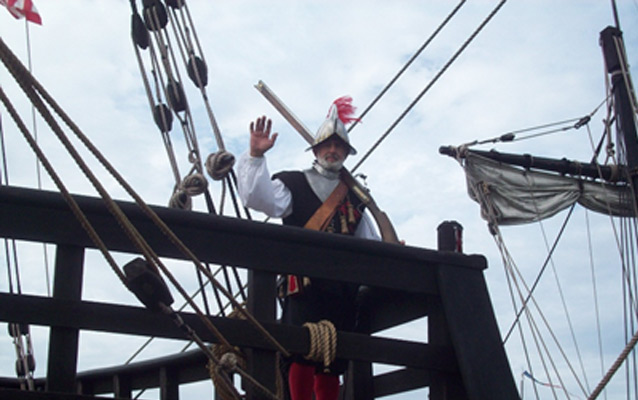Last updated: February 16, 2022
Lesson Plan
The Columbian Exchange

- Grade Level:
- Upper Elementary: Third Grade through Fifth Grade
- Subject:
- Literacy and Language Arts,Social Studies
- Lesson Duration:
- 90 Minutes
- Common Core Standards:
- 3.RI.7, 3.RI.9, 4.RI.1, 4.RI.2, 4.RI.3, 4.RI.4, 4.RI.5, 5.RI.3, 5.RI.4
- State Standards:
- FL NGSSS
SS.4.A.1.1
SS.4.A.1.2
SS.4.A.3.2
SS.5.A.1.1
SS.5.A.2.2
SS.5.A.2.3
SS.5.A.3.2
SS.5.A.3.3
Essential Question
What was the Columbian Exchange and how did the movement of people, animals, and goods affect the Eastern and Western Hemispheres?
Objective
Students will understand the importance of the Columbian Exchange and how the movement of people, animals, plants, cultures and disease influenced the Eastern and Western hemisphere. Students will also understand how the arrival of Europeans impacted the Native Americans.
Background
Columbus was an Italian explorer, but his journey west was funded by the rulers of Spain, King Ferdinand and Queen Isabella. In 1492, Christopher Columbus' first voyage launched an era of large-scale contact between Europe, Africa, and the Americas. Although gold and silver were not found in Florida, other precious commodities were. The colony of Florida became very important to the Spanish to protect their trade route back to Spain. Discover more about the Spanish Colonial Culture and Who Built the Castillo.
Preparation
Prepare your students with background information on early Native American life and later European exploration of the Americas.
Procedure
Activity 1 (10-15 minutes): Bring in objects, props, or print images of animals, goods, and people that were exchanged during the Columbian Exchange, e.g., orange, potato, cow, turkey, smallpox, tobacco, vanilla, etc. Place a sign on one side of the room that reads, Europe, Africa, Asia, place a sign on the other side that reads, North and South America, and place a sign in the middle that reads, Atlantic Ocean. Provide each student or pairs of students with an object, prop, or image. Ask them to stand by the sign they believe their item originates or comes from. After they guess, provide them with the correct answers and have them stand by the correct sign. Then ask them to move to a new side, then move again, then stay or move, and repeat these directions as much or as little as necessary to "mix up" the students and their items between the two sides. Upon conclusion, use this exercise to illustrate that this was the result of the Columbian Exchange. Animals, plants, goods, and people were now located on both sides of the Atlantic Ocean and the world would never be the same again after this global exchange.
Activity 2 (25 minutes): Have students read the Columbian Exchange Reading Activity and answer questions with a partner or as a class.
Activity 3 (30-45 minutes): Students should consider how historical perspectives would differ from the viewpoint of a Conquistador, Colonial American, Native American, or Enslaved African. Using their textbook, Internet, or library resources, students should choose one perspective and research how new imports/exports impacted that culture. Using their research, they should write a letter or journal entry that reflects on the new changes and how they may have felt about them.
Assessment Materials
To meet additional curriculum standards, access the DBQ Essay: Effects of Spanish Rule lesson plan.
Supports for Struggling Learners
Work with your exceptional student education or special education teachers to modify the lesson and materials to fit the specific needs of your students with different abilities.
Enrichment Activities
Explore the full virtual reality tour for Castillo de San Marcos National Monument that includes more functions to explore the whole park, watch ranger videos, and use 3D models.
Explore full virtual reality tour for Fort Matanzas National Monument.
Related Lessons or Education Materials
Discover more education resources for your classroom.
Discover fun online activities for kids to experience with their families.
